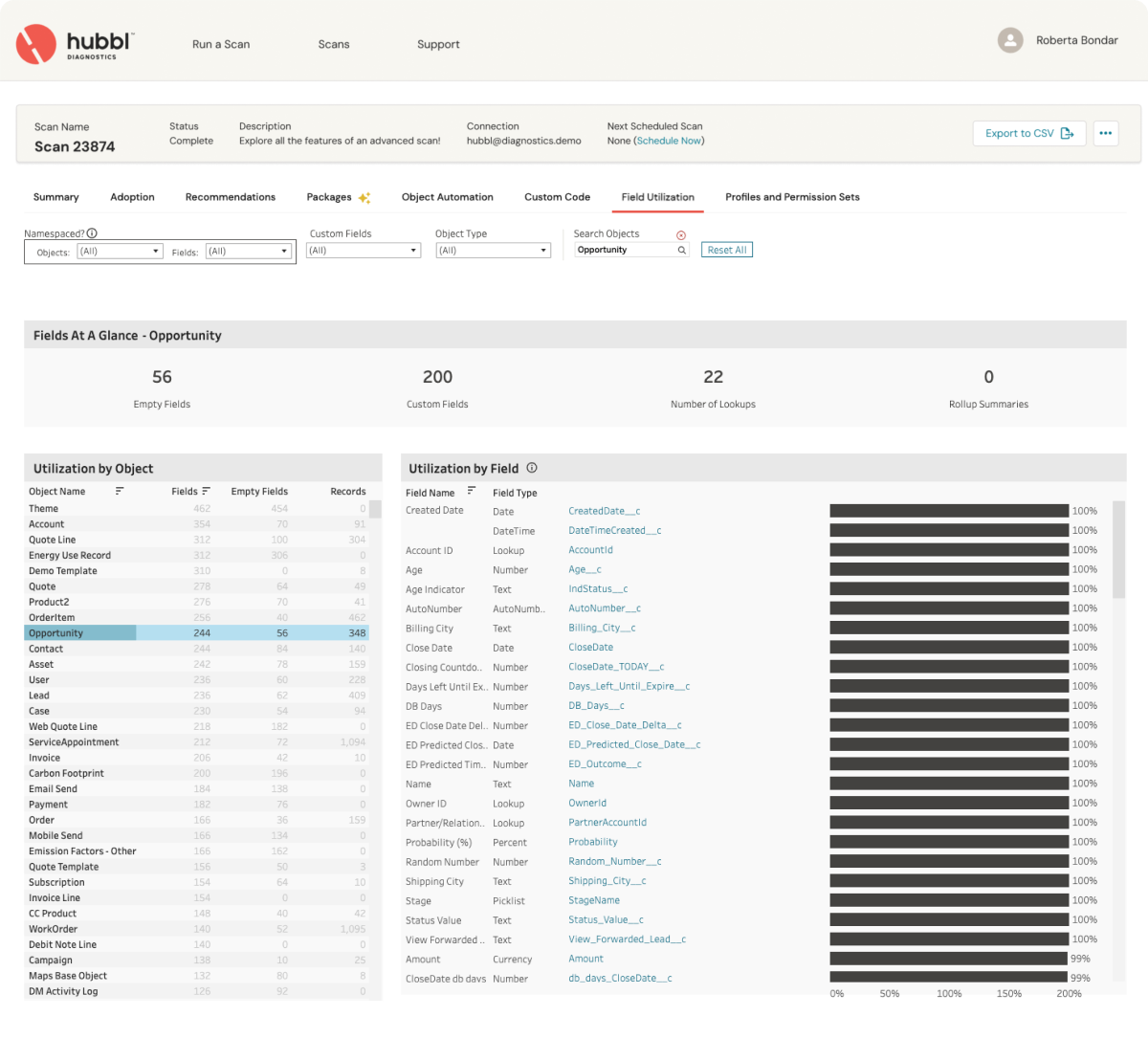
Salesforce managers, if you're grappling with the frustrating question, "Why is my Salesforce so slow?" you're in the right place.
A sluggish Salesforce can impede productivity and hinder your team's potential. Sure, a slow internet connection (or having 50 open tabs) may be the culprit, however there are certain steps all Salesforce Admins and Managers should be taking to ensure their org is optimized and efficient. In this article, we'll unpack our top tips for diagnosing a slow Salesforce org and provide actionable solutions to optimize its speed and efficiency.
Efficient Salesforce performance begins with data management. Regularly audit and clean your data, eliminating duplicates and outdated records. Streamline your database to ensure that your team is working with relevant, high-quality information. A clutter-free database translates to faster data access and improved Salesforce speed.
Here are some tips for efficient data management in Salesforce:
.png)
Empty custom fields might seem like a minor issue, but they can cause significant problems in your Salesforce org. Not only do they complicate report-building by cluttering dropdown menus and increasing user confusion, but they also contribute to technical debt, making your org harder to maintain and optimize, ultimately slowing down your team.
According to a recent study, approximately 10% of all custom fields on the most important objects in most orgs (Account, Opportunity, Case) are empty. This means that a field was created but never used.
Use Hubbl Diagnostics’ free solution to identify your empty custom fields on your most important objects (Account, Opportunity, and Case).

Custom code can be a double-edged sword. While it tailors Salesforce to your needs, inefficient code can slow down your org. Collaborate with your development team to review and optimize Apex code, triggers, and workflows. Efficient, streamlined code directly translates to improved Salesforce speed.
Here are some tips for reviewing and optimizing your custom code in Salesforce:
Hubbl Diagnostics automatically scans your Salesforce org, using both PMD and ESLint, to identify code issues and identify older API versions.
The proper use of field indexing is pivotal for speeding up data retrieval. Work closely with your technical team to identify frequently accessed fields and ensure they are properly indexed. Proper indexing reduces search times significantly, enhancing overall user experience and Salesforce responsiveness.
You can check whether a field is indexed through the Salesforce Schema Builder or the Object Manager.
It’s clear to everyone in the ecosystem that Flow is the automation tool of the future, and with Salesforce having blocked the ability to create new workflow rules and processes, migrating to Flow is no longer an option, but a necessity.
Migration effort aside, flows and triggers can significantly speed up your Salesforce org. In fact, our data shows that over 50% of Salesforce orgs could save more than 100 hours per year by migrating away from workflow and process builder. 6% of orgs would save over 1000 hours!
Here are some recommendations to help you get started in your migration to Salesforce Flow:
.png)
If you have one takeaway from this article, let this be it: Continuous monitoring stands as the cornerstone of a high-performing Salesforce org. Empowering your team with comprehensive metadata insights is not just a practice—it's a strategic advantage. These insights provide a real-time pulse on your Salesforce environment, ensuring that any issues hindering speed and efficiency are promptly addressed.
Hubbl Diagnostics is a free Salesforce metadata analysis solution that allows you to scan your Salesforce org monthly and monitor:
Embracing continuous monitoring and leveraging metadata insights empowers your team not just to react to challenges but to anticipate them. This proactive approach transforms slowdowns into opportunities for growth, making your Salesforce environment agile, efficient, and truly optimized.
Still wondering, "Why is my Salesforce so slow?" You're not alone. The causes behind a sluggish Salesforce can be diverse and complex. While we've covered valuable starting points here, it's important to acknowledge that every Salesforce org is unique. The most proactive step you can take today is to gain a comprehensive understanding of your org's current state and complexity. We highly recommend beginning this journey with our free Salesforce org analysis solution.
A slow Salesforce not only impedes productivity but can also be incredibly frustrating for your team. By delving into the specifics of your organization's setup and performance, you're not only addressing the frustration but also unlocking the potential for a streamlined, efficient, and highly responsive Salesforce experience.